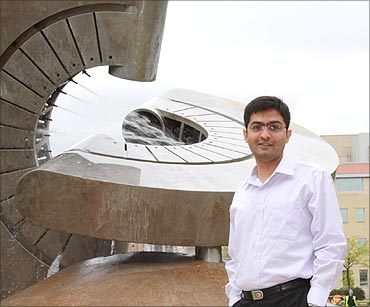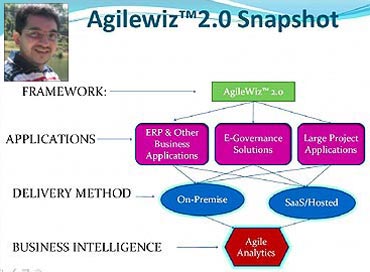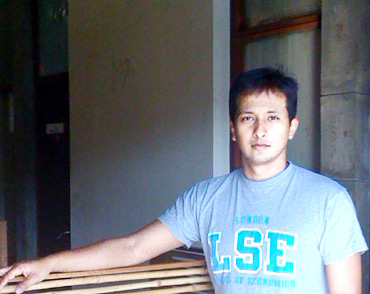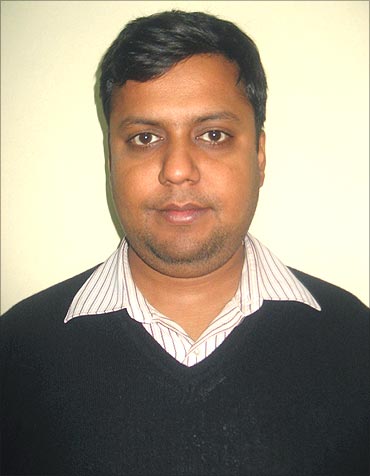Ever since India made its appearance on the entrepreneurship map with call centres and tier-B software outsourcing companies, IT or information technology has been the buzzword for the technical student diaspora of India. IT has remained the largest employing sector for the millions of engineering graduates India spews out every year. There has been lot of speculation about this field with the recession throwing people out of their jobs, and the media celebrating the loss of IT's boom and lustre and all. But speculation is one thing and facts are another. Before planning your career in IT, you need to know what the game is all about, and have a bigger picture about where things stand.
The dominance of the IT job market is due in part to numerous factors, including the continued explosive growth of the Internet and e-commerce, lower hardware and software prices allowing more companies to upgrade their technology, increased demand for information security specialists due to the amplified severity and sophistication of malicious software and cyber-threats, the advent of smarter applications enabling companies to analyze data and develop business intelligence and the dawn of the mobile computing era.
In this article, let us take a look at the most popular and paying careers in IT, and the path to reach there, as well as how these job environments would feel like. It is important to clearly identify your career objectives, and develop a learning plan with the necessary skills, degrees, and IT certifications to keep your competitive edge and achieve your goals.
I.T Careers in Demand:
DATABASE ADMINISTRATORS
Database administrators implement, support, and manage the corporate database.
Database administrators create and configure relational database objects.
Database administrators are responsible for data integrity and availability.
Database administrators design, deploy, and monitor database servers.
Database administrators design data distribution and archiving solutions.
DBAs ensure database security, including backups and disaster recovery.
Network administrators configure and manage an organization's network.
Network administrators implement, monitor, and optimize network security.
Network administrators troubleshoot, identify, solve & document network problems.
Network administrators install and support employee hard-lines, smartphones, and tablets.
Network administrators monitor & optimize the network for optimal speed and performance.
Network admins install, configure & maintain network hardware, such as Cisco routers & switches.
Network admins install, configure & upgrade network software, such as corporate antivirus programs.
WEB DEVELOPER
Web developers are fluent in programming languages like HTML, Javascript & PHP.
Web developers create, test, and optimize web pages and web-based applications.
Web developers use Cascading Style Sheets (CSS) to control the layout of websites.
Web developers understand database technologies like MySQL, SQL Server and Oracle.
Web developers can integrate corporate websites with the organization's database.
Web developers architect (plan) the layout, navigation, and functionality of a website.
Web developers communicate with clients and colleagues to troubleshoot and optimize websites.
IT SECURITY SPECIALIST
IT security specialists implement, monitor and upgrade computer virus and malware protection systems.
IT security specialists encrypt data transmissions and erect firewalls to conceal confidential information during transmit.
IT security specialists who specialize in computer forensics gather data & evidence for use in prosecuting cyber crimes.
IT security pros specializing in forensics can set up & operate an investigator’s lab and process computer crime scenes.
IT security specialists implement password authentication, to keep unauthorized users from accessing computer files.
IT security specialists modify security files to incorporate new software, correct errors, or change user access status.
IT security pros perform risk assessments and tests on running data processing activities and security measures.
GRAPHIC DESIGNER
Graphic Designers design websites, email templates, and social media hub pages.
Graphic Designers create layouts for magazines, brochures, and other print pieces.
Graphic Designers design corporate logos, business cards, and company letterhead.
Graphic Designers make promotional displays, teasers, and signs for public exhibitions.
Graphic Designers create banner ads and rich media marketing campaigns for web pages.
Graphic Designers work closely with Copywriters, Creative Directors, and Marketing Managers.
Courtesy: itcareersfinders.com
The dominance of the IT job market is due in part to numerous factors, including the continued explosive growth of the Internet and e-commerce, lower hardware and software prices allowing more companies to upgrade their technology, increased demand for information security specialists due to the amplified severity and sophistication of malicious software and cyber-threats, the advent of smarter applications enabling companies to analyze data and develop business intelligence and the dawn of the mobile computing era.
In this article, let us take a look at the most popular and paying careers in IT, and the path to reach there, as well as how these job environments would feel like. It is important to clearly identify your career objectives, and develop a learning plan with the necessary skills, degrees, and IT certifications to keep your competitive edge and achieve your goals.
I.T Careers in Demand:
DATABASE ADMINISTRATORS
 |
| Database Administrators |
Database Administrators organize and manage a company's data.
Database administrators ensure that business data is readily available, the database is secure, and database performance satisfies business requirements.
The corporate database is the heart of key business systems that drive payroll, manufacturing, sales, transaction processing and more, so database administrators are recognized, and rewarded, for playing a crucial role in an organization's success. Beyond database administrators' high salary potential, a job in databases offers the personal satisfaction of solving business problems and seeing [in real-time] how your hard work benefits the firm.
A typical database administration learning plan begins with an undergraduate degree in computer science or computer information systems (CIS). A balance of technical, business and communication skills is critical to a database administrator's success, so the next step in a DBA's education is often a master's degree with an information systems concentration, typically an MBA in Management Information Systems (MIS) or CIS. Database administrators continue to learn and advance their career with certifications in one or more of the leading database management systems (DBMS); In-demand database systems include Oracle, Microsoft SQL Server, IBM DB2 & MySQL.
Database Administrator Education Requirements
Database administration positions typically require at least a bachelor’s degree in Computer Information Systems (CIS), Computer Science, Database Administration or a related field of study. Many employers prefer to hire MBAs for database administration jobs; Besides the extra database training, MBAs are familiar with a wide range of business areas, e.g., accounting, marketing, and management, and they're typically more adept at communicating with technical and non-technical employees - two consistent traits of highly successful DBAs. Popular MBA concentrations for database administrators include Management Information Systems (MIS), Database Management, and CIS. Database administrators will further distinguish themselves and advance their careers with specialized training and certifications in the leading database management systems, such as Oracle 11g, Microsoft SQL Server 2008, IBM DB2, Sybase and MySQL
- Database administrators are proficient in one or more of the leading database
management systems, e.g., MySQL, Microsoft SQL Server, IBM & Oracle.
NETWORK ADMINISTRATORS
 |
| Network Administrators |
Network Administrators manage networks and communications systems.
Network administrators install, support, and manage the computer networks and business systems that keep information flowing. Network admins implement and maintain network hardware & software, identify & solve network problems, and ensure network security, availability & performance standards.
In challenging economic times, organizations retain and/or hire network administrators to optimize existing networks for reduced costs and increased operational efficiency. During economic recovery and growth, companies purchase new network and communications technologies to gain a competitive advantage, leading to increased demand for network administrators to install, secure and optimize the new systems. This consistent demand for network administrators, independent of economic conditions, has led many employment experts to dub network administrator a "recession proof career."
The U.S. Dept. of Labor forecasts employment for network administrators to increase by 23% from 2008 to 2018, much faster than the average for all occupations. With demand at an all-time high, it's an ideal time to learn network administration. There are numerous network administration training programs and accredited degrees featuring coursework in contemporary network technologies;
Network Administrator Education Requirements
Network administrators are often required to have at least an undergrad or graduate degree in computer science, network administration, systems engineering, or a related field of study. Upon completion of a formal education program, network administrators can further distinguish themselves and increase employment and advancement opportunities by earning network-centric certifications, such as CompTIA's Network+, Cisco's CCNA, and Microsoft's MCTS: Server 2008 Network Infrastructure Configuration.
Fundamental skills and courses to look for in a network administration degree program include systems administration training, LAN & WAN installation & configuration, routing & switching, and some variety of network security training. A networking degree that includes certifications will help you graduate with a distinct competitive advantage. Effective communication skills are also key, as network administrators must be able to easily communicate complex ideas and solutions to both technical and non-technical employees. Beyond these basics, choose a degree with the courses that interest you most, or those featuring networking skills that are hot right now, such as virtualization or cloud computing.
WEB DEVELOPER
 |
| Web Developer |
Web Developers write code for web pages & web-based applications.
Web developers create the web pages and web-based applications that comprise the Internet. A basic web development work-flow includes collecting or creating web content (copy, images, multimedia, etc.), planning web site layout and navigation, developing web pages and testing in multiple web browsers, and optimizing the website for peak performance & superior user experience.
Successful web developers are fluent in the programming languages that fuel the web. All web developers need a command of HTML, Javascript & CSS. It's also helpful to know a server-side programming language, such as PHP, Microsoft .NetVisual Basic, or Java 2 Enterprise Edition (J2EE), to develop complex business and mobile applications. Web developers can further distinguish themselves and increase their earning potential by learning and/or getting certified in one or more of the leading database systems, such as MySQL, Microsoft SQL Server, IBM DB2, or Oracle, to write web applications that interact with the corporate database.
Web development projects require frequent revisions and enhancements, so web developers need strong communication skills to better interact with project managers, clients, and team members. Creativity and an understanding of color theory and design concepts will also add to your range and value as a web developer. Web developer jobs exist in all settings, including enterprises and government agencies, small to medium-sized businesses, and working alone as freelancers.Web Developer Education Requirements
Hands-on programming experience is the key requirement for securing employment as a web developer. Hiring managers for web development positions will typically ask to see a portfolio with samples of the web pages and applications you've created. Professionals new to web development can learn the requisite programming skills and start building their portfolio through an accredited degree program in Web Design, Web Development, Software Engineering or a related field of study. Fundamental programming skills to look for in a web development education program include HTML, CSS, and JavaScript. Multimedia skills are quickly becoming a standard education requirement for web developers as as well, e.g., Flash Animation. Beyond these basics, prospective web developers should choose a degree program with the focus area(s) that interest them most, such as graphic design, interactive media, Flash animation, and mobile media development. Campus-based programs and online training formats work equally well with web development subject matter.
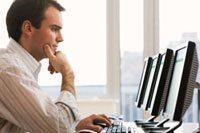 |
| IT Security Specialist |
IT Security Specialists Protect an Organization’s Information Systems.
In an era of increasing security threats, cyber crimes and cyber warfare, enterprises must carefully protect their information assets. IT Security Specialists utilize an in-depth understanding of information security risks, threats and attacks, along with the technologies, policies and procedures needed to design and implement secure computer systems.
IT security specialists educate employees about computer security, install security software to prevent cyber-attacks, monitor networks for security breaches, and inevitably respond to the attacks that breach an organizations security with the appropriate countermeasures. Some IT security professionals specialize in computer crime investigation; these specialists use cutting-edge forensics hardware and software to gather data & evidence for use in prosecuting cyber crimes.
Job market demand for IT security specialists is booming in all types of organizations, including corporations, educational institutions, health care practices, and government agencies. According to the U.S. Bureau of Labor Statistics, employment of IT security specialists is expected to increase by 23% from 2008 to 2018, more than double the 11% average for all jobs.
IT Security Specialist Education Requirements
Hiring managers for IT security specialist positions generally require at least an undergraduate degree (associate or bachelor) in information security, computer information systems, network security, computer science or a related field of study. IT job experience and security-centric certifications will aid candidates in securing IT security specialist positions.
IT security pros develop plans to safeguard computer files against unauthorized modification, destruction or disclosure.
Specific coursework and in-demand skill sets to look for in an IT security specialist education program include networking and network security, operating system administration, business continuity & disaster recovery, hardware & software configuration, risk management and computer forensics. IT security specialists need strong communication skills, as they are responsible for educating technical and non-technical staffers on computer security protocols and awareness.
 |
| Graphic Designers |
Graphic Designers fuse creativity with technology to create visually engaging graphics that communicate a message.
If you’re creative, have a good eye for color & composition, and a love of technology, then graphic designer may be the career path for you. Graphic designers’ duties vary widely and may include creating advertisements, designing web pages, laying out catalogs & newsletters, designing logos & marketing collateral, and a range of other web, print and interactive materials your company or clients require.
The demand for well designed graphics - and graphic designers - is at an all time high. From web design and multimedia advertising to print publishing and 3D package design, clients expect and demand their branding to increase sales and elevate their status. Self-employment opportunities are abundant for the skilled entrepreneurial designer. Contributing to the positive outlook for graphic designers is the omnipresent need for web and multimedia design projects, now that almost every business and individual has a website or social media presence requiring eye-catching graphics.
While being a graphic designer can be a fun job, a career in graphic design should not be taken lightly. If you want to be a successful graphic designer, it’s important to carefully construct your learning plan, continually advance your skills and training to keep pace with the latest digital design technologies, and build on your portfolio of work. Word of mouth and feedback from past employers typically plays into the decision to hire graphic designers, so reputation and quality of service are essential to success.
Graphic Designer Education Requirements
An undergad or graduate degree in graphic design, fine arts, multimedia production, or a similar field of study in the creative arts is required education for most graphic design positions. Hands-on graphic design experience is just as important - or more important depending on who you ask - so regardless of how you learn or where you train, be sure to keep a comprehensive portfolio of your best design projects, as this is how professional graphic designers showcase their work to prospective clients and employers. Because your design portfolio is a critical factor in getting hired, all of our featured graphic design degrees include dedicated courses and/or assistance in graphic designer portfolio & resume compilation.
As the demand for web and multimedia graphic designers continues to increase, art and computer schools are bolstering their degree and certificate programs with coursework in modern digital design topics, such as computer animation, interactive media, 3D modeling, web application design, and digital photo manipulation. Skills and expertise in the latest graphic design software is also vital, especially the Adobe Creative Suite, the most respected and widely used collection of design programs. Prospective print graphic designers should learn Adobe Illustrator, InDesign, Photoshop & Acrobat Pro, while web graphic designers should focus on Adobe Photoshop, Dreamweaver, Flash & Fireworks.





